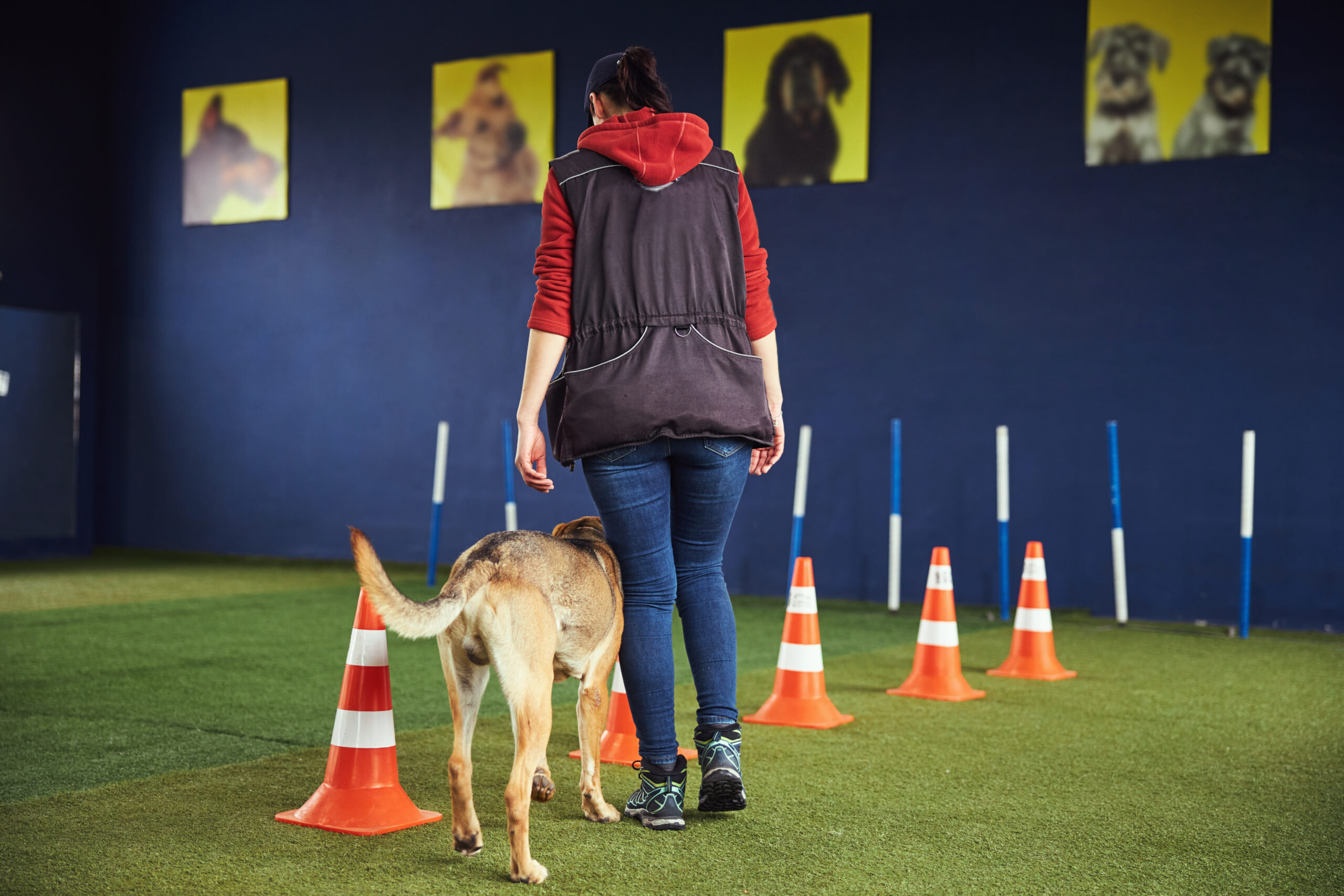26 September 2025
There’s nothing quite like a peaceful walk with your dog or a relaxing afternoon in the yard. But for many pet parents, that peace is often shattered by a sudden lunge at a passing jogger, frantic barking at a squirrel, or the heart-stopping discovery of an open gate.
If you're struggling with a dog that reacts to everything that moves or has become a master escape artist, you're not alone. These behaviors can be stressful and even dangerous, but they don't have to be a permanent part of your life. The key is to manage your dog’s environment to prevent the behavior from being practiced and reinforced.
Here at The Pet Pantry, we believe a well-behaved dog is a happy dog, and that starts with a safe and structured environment. We’ve compiled these practical tips to help you curb the chaos and build a calmer relationship with your four-legged family member.

Managing Reactivity: Creating a Calm Home Base
A dog that lunges and barks at passersby is often practicing a behavior called "territorial aggression." The more they do it, the more ingrained it becomes. Your first line of defense is to control their environment to set them up for success.
1. Redesign Your Yard for Peace and Quiet
Preventing your dog from having an unrestricted view of high-traffic areas is crucial. When a dog can run along a fence line barking at people, they are self-rewarding the behavior, making it stronger over time.
- Limit Access: Prevent your dog from having unlimited access to the entire yard, especially front yards or areas with a clear view of the street. Consider using internal fencing to create a designated "dog zone" in a more secluded part of your property, like the backyard.
- Create Visual Barriers: Use landscaping to your advantage. Planting dense shrubs or installing privacy screening on your fence can block your dog’s view of the outside world, reducing the temptation to react to every stimulus that comes near.
2. Master the Front Door Greeting
Your front door is a major threshold. An out-of-control greeting can be overwhelming for guests and reinforce hyperactive behavior in your dog.
- Establish a Boundary: Train your dog to stay on a mat or behind a baby gate when the doorbell rings. This ensures guests can enter your home without being greeted by an overly excited or potentially intimidating dog. Remember, even a small, friendly dog can be frightening to someone who is afraid of dogs.
Fortifying Your Yard: Tips for the Escape Artist
A secure fence is about more than just keeping your dog in; it’s about keeping dangers out. Here are some essential tips for ensuring your yard is a true safe haven.
3. Rethink the Underground or Electric Fence
While they can keep a dog within a boundary, underground or electric fences should never be used without direct supervision.
- They Don't Create a Barrier: These systems don’t prevent other animals or people from entering your yard. This leaves your dog vulnerable to being stolen, teased, or attacked by another dog. A highly aroused or fearful dog may also run through the electric boundary, only to be unwilling to cross it again to return home.
4. Outsmart the Fence Jumper
For dogs that can scale fences, a few modifications can make a world of difference.
- Install Coyote Rollers: These are rollers placed at the top of a fence that spin when an animal tries to get a foothold, preventing them from pulling themselves over.
- Add a Secondary Barrier: Install an underground fence line a few feet inside your physical fence. This can deter your dog from getting close enough to the fence to jump it.
- Consult a Professional: Persistent fence jumping is a complex issue. Working with a certified professional dog trainer can help you address the root cause of the behavior, such as separation anxiety or boredom.
5. Stop Digging in Its Tracks
If your dog is a digger, they can create an escape route in minutes.
- Bury a Barrier: Staple chicken wire to the bottom 2 feet of your fence and bury it at least 6-12 inches underground, bending it away from the fence in an "L" shape. This creates a barrier that will stop your dog's paws when they try to dig near the fence line.
6. Secure Your Gates (Automatically!)
An open gate is an invitation for disaster. Human error is common, so why not take it out of the equation?
- Install Self-Closing Springs: These simple and inexpensive devices can be installed on most gate hinges. They ensure that the gate swings shut automatically behind you every time, preventing accidental escapes. Add a self-latching mechanism for ultimate security.
Patience and Consistency are Key
Managing your dog’s behavior is a journey, not a sprint. By implementing these environmental changes, you remove the opportunity for your dog to practice unwanted behaviors, which is the first and most important step in any training plan.
By creating a secure and calm environment, you provide the foundation your dog needs to thrive. A safe dog is a happy dog, and a happy dog makes for a happy home.

